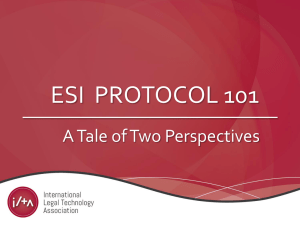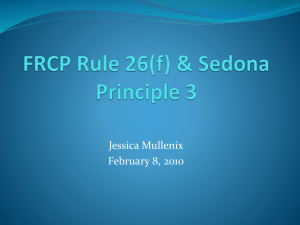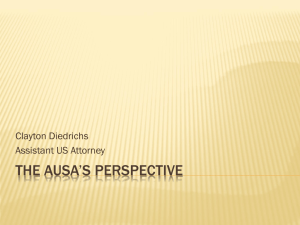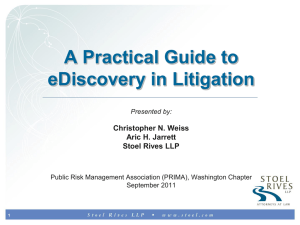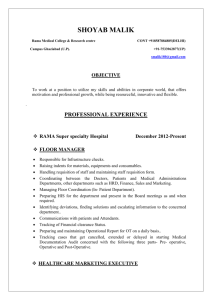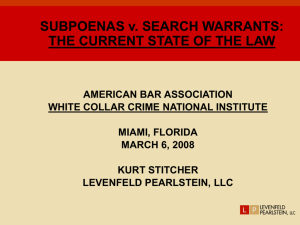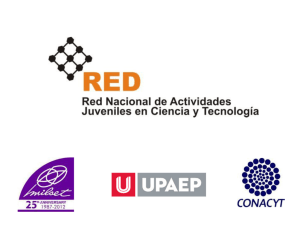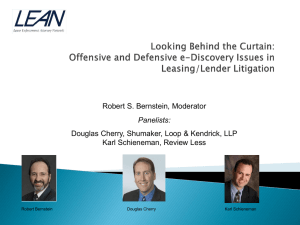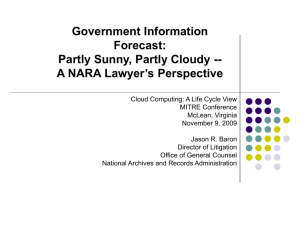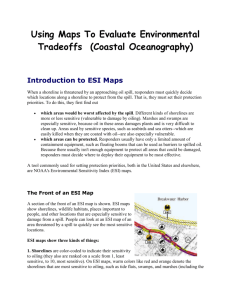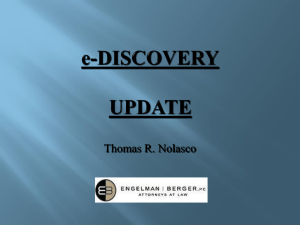CHANGES IN CALIFORNIA DISCOVERY RULES The
advertisement
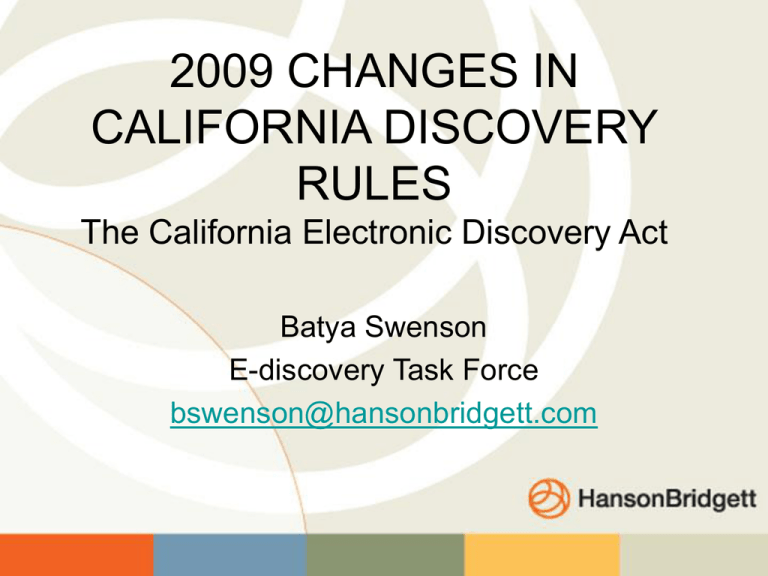
2009 CHANGES IN CALIFORNIA DISCOVERY RULES The California Electronic Discovery Act Batya Swenson E-discovery Task Force bswenson@hansonbridgett.com BACKGROUND • Federal courts and 20+ states have already codified discovery rules for electronically stored information (“ESI”) • ~95% of all business data • 100 billion California’s E-Discovery Rules • Let’s just call it the EDA for now (Electronic Discovery Act) • The EDA modifies existing discovery provisions to specifically account for ESI discovery • EDA's provisions set out the manner for requesting, responding to and producing ESI, including subpoenas for ESI. Been there…. • Since 2006, federal courts have specifically addressed the discovery of ESI • EDA is similar to the federal rules • EDA establishes ESI’s importance in state court litigation THE EDA • Why is it important to you? • What key concepts may affect you? • What’s new and different? WINNING CASE AND AVOIDING SANCTIONS • Attorney is often an outsider and needs your help – New client, New department, New type of case – Gathering evidence, imposing hold, responding to discovery • Sanctions mandatory as always for discovery abuses – No more excuses for failure to manage and preserve ESI – Monetary, Evidence, Issue Sanctions • NEW - Safe Harbor Rule – Does not avoid preservation obligation – Routine, good faith operations of IT systems – Retention policy/program • Discrepancy or consistency in implementation? – Corruption of data PARTIES MUST ACT EARLY TO AVOID LOST ESI • Not a new concept in discovery but more developed and codified with respect to application to ESI • Where Records Managers are most likely very involved • Preservation Obligation – “Reasonable anticipation of litigation” – What does this mean? Claims; Demand letters; Complaint – Who decides if the obligation has been triggered? – Be proactive – no sanctions for too much care and attention • Litigation Holds – Initial Analysis (Relevant ESI/Custodians/Sources/BackUp/Retention Program) – Implementation – Who’s the point person – Communication and Buy In – Confirmation by staff – Oversight – Duration of litigation – Attorney’s Role – As required by courts NEW - FORM OF PRODUCTION • Form of ESI identified in discovery Result: requests more sophisticated requests in state court matters • RESPONSES As requested OR Ordinarily maintained & reasonably usable • OBJECTIONS: “must identify the types or categories of sources of ESI that it asserts are not reasonably accessible” NEW - EARLY MEET AND CONFER REQUIREMENT • Pre-CMC Meet and Confer Conference Topics – Preservation – Form(s) – Timing – Scope – Privilege (Clawback Agreement) – Confidentiality (Protective Order) – Cost allocation – Catch-all; Discovery plan (Phased) NEW - THE STANDARD WHAT COUNSEL WILL FACE IN A DISCOVERY MOTION • • • • NOT REASONABLY ACCESSIBLE – BURDEN OF PROOF “UNDUE BURDEN OR COST”: BALANCING TEST – Less expensive, more convenient source – Unreasonably cumulative or duplicative – Ample opportunity to obtain the information through discovery – Burden/expense v. benefit • amount in controversy • parties’ relative resources • importance of the issues in the litigation • importance of the requested discovery in resolving the issues YOUR ROLE – Helping counsel gather the facts – Tracking investment of staff time and other hard expenses – Declaration under penalty of perjury – PMK Depositions COURT CAN ORDER PRODUCTION BUT REALLOCATE COSTS NEW - SUBPOENAS • Issuing party must take reasonable steps to avoid undue burden or expense on nonparty • Similar rules in terms of form apply • Responses in requested form • Burden still on objecting party on issue of reasonable accessibility • Court can order production but reallocate costs – Track expenses BEST PRACTICES FOR RECORDS MANAGERS • Will vary with size and type of organization – subpoenas, repeat litigation, other responsible staff and support • Implement retention policy if it exists – consult with counsel about the policy or writing one • Inform yourself of IT structure, data management and destruction processes • Educate and assist counsel • Act early and stay invested when a matter arises • Understand scope of matter, key players & potential exposures • Communicate with internal case contact, IT and/or attorney • Monitor implementation of hold internally EXAMPLES • Back-up tape recycled and Inbox of former employee lost • Key employee laptop hard drive not searched • Text Messages not captured • Automatic email deletion program
